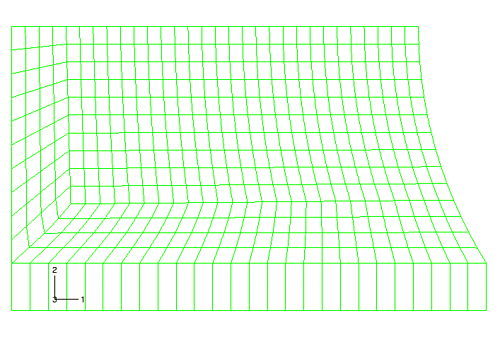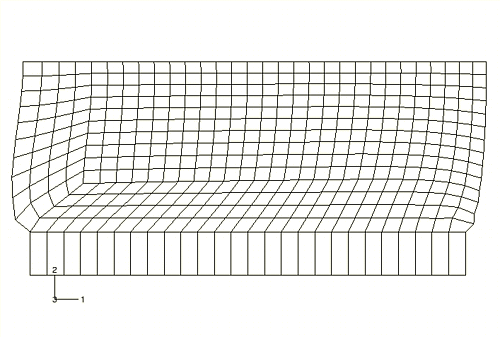Mesh design for large distortions | ||
| ||

The issues surrounding the mesh distortion in the opposite corner are addressed in Techniques for reducing volumetric locking. The elements in the bottom left-hand corner region are now much more distorted in the initial, undeformed configuration. However, as the analysis progresses and the elements deform, their shape actually improves. The deformed shape plot, shown in Figure 2, illustrates that the amount of element distortion in this region is reduced; however, the level of mesh distortion in the bottom right-hand corner of the rubber model is still significant.

The contours of maximum principal stress (Figure 3) show that the very localized stress in that corner has been reduced only slightly.

Mesh design for large-distortion problems is more difficult than it is for small-displacement problems. A mesh must be produced where the shape of the elements is reasonable throughout the analysis, not just at the start. You must estimate how the model will deform using experience, hand calculations, or the results from a coarse finite element model.